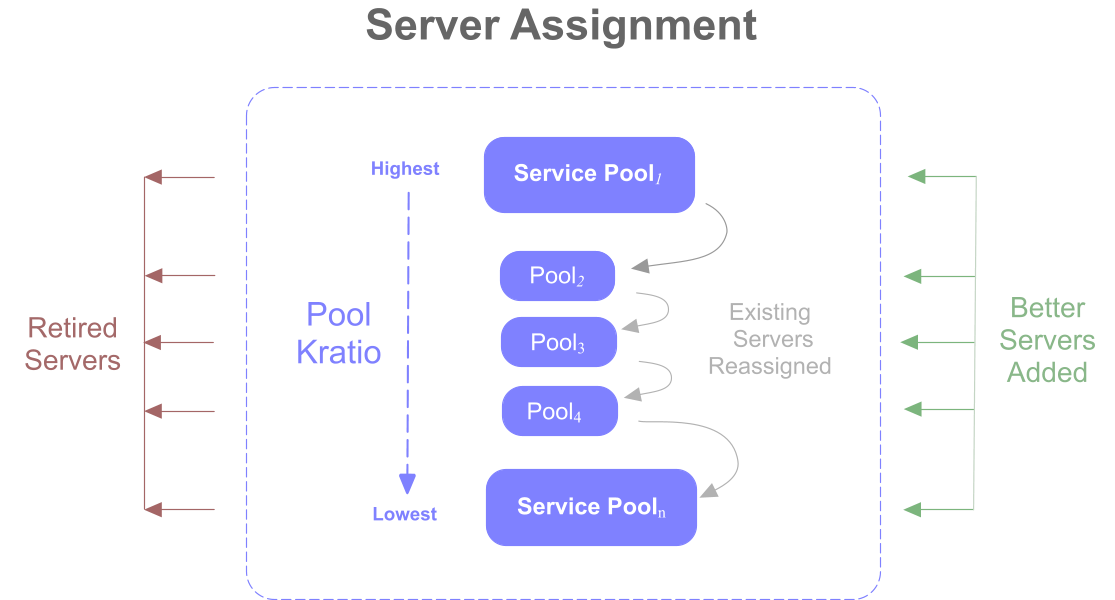Appearance
Inventory Policy
Introduction
An inventory policy is a set of rules and guidelines for how inventory is converted, operated, or consumed in pursuit of a business objective. A policy is typically informed by a mathematical model that accurately describes the behavior of inventory and can identify an optimal solution with respect to the business objective.
The basic function of any inventory policy is determining what, when, and how much to order — as a repeatable process. When inventory is not available for resale, but instead operated (e.g., hardware), inventory policy needs to also incorporate the additional function of determining what, when, and how much to remove.
To answer "how much" hardware, hardware inventory quantities must be normalized into equivalent units since performance characteristics may differ on a per server, processor, or core basis within the same product generation - and certainly over time as next generation products are introduced.
Discrete Inventory
Discrete inventory corresponds to distinct items that can be easily counted, touched or seen. The final product typically can be disassembled into its constituent parts, like IT hardware.
A Bill of Material (BOM) describes how individual units of raw materials, components, and assemblies are organized to compose a final product for purposes of design, build, or service. A Work Order (WO) is used to manage process steps necessary to transform constituent parts into a final product.
Analogous to BOMs and WOs, a Configuration Management Database is used by IT to provide transparency for governing configuration state changes of infrastructure inventory to enable business objectives (e.g., regulatory compliance, etc.). CI/CD pipeline tooling is used to govern and automate process steps to deliver custom software.
Process Inventory
Process inventory corresponds to inputs that undergo a transformation, using formulas or recipes, to arrive at a final product. The transformation process may include changes to volume, density, mass, or other physical properties.
For example, refining crude oil involves separation, conversion and treatment processes to produce useable products like motor gasoline, jet fuel, lubricants, and waxes. A less complex example involves mixing a syrup concentrate with carbonated water to produce soda. The former is a distillation process and the latter a mixing process. Both involve physical transformations of a fluid from one state to another.
Infrastructure Inventory Behavior
Zypr uses a mixing process to evaluate resource state transformation of a resource pool. But unlike the above soda example and fixed-time refresh policies, Zypr doesn't rely on a predefined mixing formula. Instead, Zypr identifies the future mixing formulas that produces the lowest total cost over time. How that is accomplished is generalized by the following rate equations:

The volume flow rate represents the turnover of server inventory – the servers that are added and removed from a pool with respect to time. The mass flow rate represents the same turnover of server inventory, but instead of server quantities, the rate equation represents changes to hardware performance expressed as the hardware computing rate (HCR) - a measure of a server's capacity to perform work. The objective function is to minimize the cost of HCR concentration - the cost per unit of work.
To solve the objective function, this mixing process needs to be further informed by the unit cost for hardware, software, power and space resources and how each are differentially related to each other. Differentially related simply means changes to one type of resource (input) causes a change to another type (output), and that process is governed by a derivative that quantifies the input-output function's sensitivity to change.
This form of inventory behavior is unlike typical inventory systems. For example, manufacturing two vehicles currently requires two, and only two, steering wheels. Instead, the more work server, processor or core inventory can perform, typically results in reduced requirements for software, power and space resources. Predicting how this type of inventory behavior simultaneously evolves, at the lowest total cost for all resources, is what Zypr answers.
To that end, these rate equations provide a sound generalization of state transformation for a "smooth" mixing process. However, infrastructure inventory and resource consumption behavior primarily evolves by way of discontinuous forcing terms corresponding to changes in discrete units and events at identifiable times (e.g., a hardware configuration change, a price change for software, etc.).
Zypr therefore uses numerical methods and piecewise operations to inject discrete events into the evolution process to more precisely evaluate a far larger feasible solution space than what's considered when utilizing fixed-formula methods (e.g., refresh servers every five years). You can find more detail here about how Zypr works.
Scalable Inventory Policy
Virtualization and containerization, along with newer architectures, have made hardware nearly fungible and workloads highly portable. This abstracting away of hardware resources from the workloads that consume those resources has ushered in a wide-range of benefits.
One of those benefits is enabling more agile and leaner inventory management practices. Resource pools can be incrementally modified on a more frequent cadence (e.g., weekly, monthly, etc.) with little effect to workloads, but which requires more precise resource planning and forecasting in order to:
- Raise and maintain higher rates of resource utilization (i.e., reduce unnecessary over-provisioning)
- Monetize more performant/efficient hardware at faster uptake rates
- Assign servers based upon their highest economic utility (i.e., economic-life) throughout their service-life.
Zypr enables organizations to incrementally implement and scale the capturing of these benefits.
